Macro Calculator
This free, easy-to-use macro calculator gives you your optimal macronutrients and calories. It’s a weight loss or muscle gain calculator for both women and men.
Combine with macro counting or flexible dieting to reach your goals faster.
How to get leaner and stronger?
Our comprehensive macro-based fat loss program shows you how. Learn more
How do macros work?
The foods we eat are made up of three macros (macronutrients). These are carbohydrates (carbs), protein, and fat.
Chicken is high in protein but has no carbs; rice is high in carbs but has very little fat or protein. The three macronutrients provide the body with energy and raw materials for growth and repair.
By calculating the appropriate daily calorie amount for you, we can then break this down into the best macronutrient ratios to achieve weight loss.
Basic steps for macro counting
- Enter details into the calculator
Make sure to choose the correct goal. - Take note of your calories and macros
These will be the targets you are aiming for each day. - Track your macros
Use an app or pre-plan your meals. - Measure results
Don’t use basic weight scales.
Use proper body composition scales (we recommend Renpho) to measure fat and muscle mass changes.
What is a good macro ratio for fat loss or muscle gain?
Your macros should be based on your Total Daily Energy Expenditure (TDEE) and goals.
The calculator defaults to the best macro ratio proven to work for most people.
This ratio is:
- 30% fat
- Protein is 0.65 grams per pound of body weight,
- The remainder is carbs.
Depending on your goal, this will be either a calorie deficit or a surplus.
You can go further and make more adjustments: Perhaps you’re an extreme endomorph and do better with fewer carbs. Or perhaps you have one kidney and need to eat less protein.
You can fine-tune your results with a bit of math. See how to change your macros here.
What is a good protein ratio?
Rather than a percentage, proteins are based on your body weight. Our calculator has three settings:
- Moderate adjusts the ratio to 0.65 grams per pound of body weight.
This is appropriate for sedentary individuals or people with higher body fat percentages. - High is for active people with moderate strength training and an average body fat percentage.
- Maximum will set the ratio to 1 gram per pound.
This amount is good for bodybuilding and gaining muscle mass. You must be doing intense training.
Find out how to fine-tune your protein ratios when counting macros
Fat macro ratio
Set fat at 30% of daily energy expenditure.
Most people do very well with this amount of fat. See more about choosing the best macro fats. Because of high-fat diets like keto, many people are now eating more fat than they need to.
Carbohydrate macro ratio
Once you’ve calculated protein and fat, the remainder of your daily calories should be from carbohydrates.
Carbs fuel your body and workouts – and are the body’s preferred energy source.
If you are coming from a low-carb background, this may seem high. However, according to respected nutritional research, this is a moderate amount of carbs.
If you are eating according to your TDEE, the notion that carbs cause weight gain or stop fat loss is incorrect.
Using as a Calorie Deficit Calculator
As a weight loss calculator, this tool establishes a safe calorie deficit only.
The Lose option puts you in a 20% calorie deficit, promoting safe, steady weight loss.
The best macro ratio for body recomposition
If you want to recompose your body (lose fat and gain muscle simultaneously), then use the body recomposition calculator.
Macro ratio for maintenance
The Maintain button shows you the macro levels to maintain your current weight.
This is great if you have lost weight and don’t want to gain it back.
Macro ratio for muscle gain
The Gain button puts you in a 20% calorie surplus.
The macro breakdown is designed to build muscle fast in conjunction and must be combined with a comprehensive weight training program.
Underweight people can also use it.
TIP: Try starting with the maintenance goal and gradually increasing calories if you want lean muscle gains.
Calculating macros using your body fat percentage
The calculator uses your body weight to determine calories and macros.
However, you can obtain superior results by using your body fat percentage. The calculator allows you to choose which method: Normal for body weight, Lean Mass for fat percentage.
When to choose the Lean Mass Formula
If you are lean (have a low body fat percentage), choose the Lean Mass formula and enter your body fat %.
If you are classified as obese and have a lot of weight to lose, the lean mass formula is superior. You can read more about macro counting and obesity.
Help? Calculate your ideal body weight or get an assessment of your body fat percentage.
Why the difference? Muscle cells burn more calories than fat cells, so the more accurately we measure this, the better your results will be.
How to calculate macros per meal
You can break this down into meals once you’ve calculated your daily macros in the calculator.
Choose from 2 to 6 meals daily to see the macro ratio you can track for each meal. For some people, this is easier, but for others, this is too much detail.
Do what works for you.
Meal Plans
See a 5-day macro-based meal plan. It includes three meals and two snacks per day.
Macro calculator activity level settings
A higher activity level means a higher daily calorie goal.
For example – if you maintain your weight at 2,000 calories per day, adding vigorous daily exercise means you need more calories to maintain your weight.
If you are sedentary and trying to lose weight, adding exercise will increase your daily calorie goal.
The idea seems counter-intuitive, but more energy is required to fuel your workouts. More workouts lead to increasing metabolism; therefore, more fat is burned!
Undereating is one of the leading causes of the weight loss plateau.
So many of our clients previously “hit the wall” with dieting. They would continually reduce calories, stop losing fat, and gain weight when they eat a little more.
Macro counting defeats this by prescribing the right food and calorie levels.
Which activity level do I choose?
- Sedentary: Just regular everyday activity like a bit of walking, a couple of flights of stairs, eating, etc.
- Light: Any activity that burns 200-400 calories (females) or 250-500 calories (males) over your sedentary amount.
- Moderate: Any activity that burns 400-650 calories (females) or 500-800 calories (males) more than your sedentary amount.
- Extreme: Any activity that burns more than 650 calories (females) or more than 800 calories (males) in addition to your sedentary amount.
Other options for determining your calorie burn
- Use our calories burned calculator – it accurately assesses over 380 activities.
- Use a fitness tracker – like a Fitbit or Apple Watch (note that they can overestimate calorie burn).
- Use a suitable app – like MapMyFitness
Why should I eat more when I exercise more?
High physical activity not fueled with enough calories will lead to muscle catabolism (breakdown of muscle fiber).
This lack of nutrition could stall your weight loss, so eat up if you love to exercise!
I’ve got my macros – now what?
Once you’ve identified your target daily macros, you must determine the macros in all your foods.
By tracking them daily, you can reach your recommended macro targets that encourage fat loss, muscle gain, or whatever your goal may be.
You can learn more about the macro counting system and the flexible dieting philosophy. Many people use an app like Myfitnesspal to track macros.
For more specifics on what to eat – see a sample macro meal plan or a list of macros for familiar foods.
View article sourcesSources
- Mifflin, M. D., St Jeor, S. T., Hill, L. A., Scott, B. J., Daugherty, S. A., & Koh, Y. O. (1990). A new predictive equation for resting energy expenditure in healthy individuals. The American Journal of Clinical Nutrition, 51 (2), 241-247. Link
- McArdle, W. D., Katch, F. I., & Katch, V. L. (2010). Exercise physiology: nutrition, energy, and human performance. Lippincott Williams & Wilkins. Link
- Jequier, E. (1994). Carbohydrates as a source of energy. The American journal of clinical nutrition, 59(3), 682S-685S.
- Lemon, P. W., Tarnopolsky, M. A., MacDougall, J. D., & Atkinson, S. A. (1992). Protein requirements and muscle mass/strength changes during intensive training in novice bodybuilders. Journal of Applied Physiology, 73(2), 767-775. study abstract link
- Grundy, S. M. (1999). The optimal ratio of fat-to-carbohydrate in the diet. Annual review of nutrition, 19(1), 325-341. abstract
- Conlin, L.A., Aguilar, D.T., Rogers, G.E. et al. Flexible vs. rigid dieting in resistance-trained individuals seeking to optimize their physiques: A randomized controlled trial. J Int Soc Sports Nutr 18, 52 (2021). https://doi.org/10.1186/s12970-021-00452-2
2,104 Comments


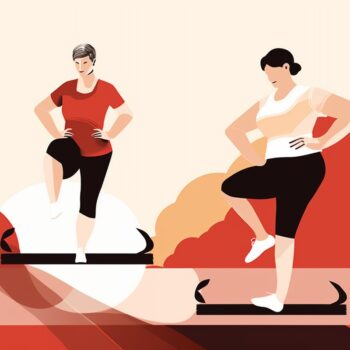 Menopause Macro Calculator
Menopause Macro Calculator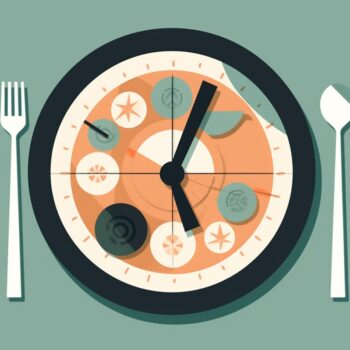 Intermittent Fasting Calculator
Intermittent Fasting Calculator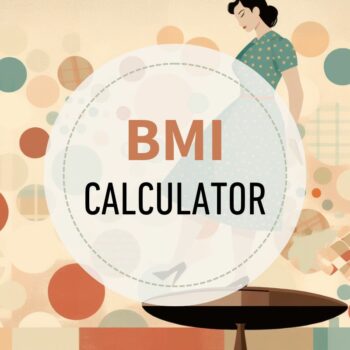 BMI Calculator
BMI Calculator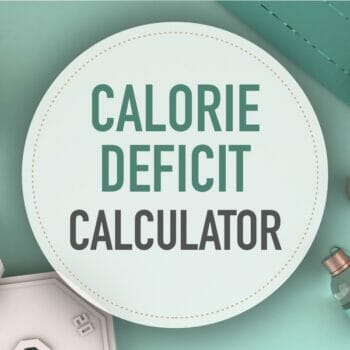 Calorie Deficit Calculator
Calorie Deficit Calculator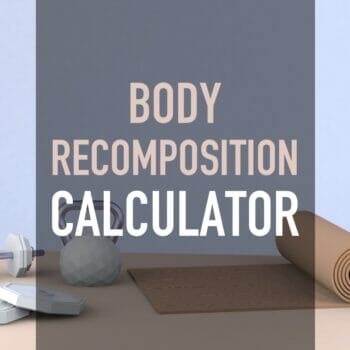 Body Recomposition Calculator
Body Recomposition Calculator
Hey Everyone! Im just trying to wrap my head around this, Ive always been a low carb, salads and protein type of eater, working out 5 days a week. My workouts consist of strength training and high intensity cardio. I really want to try something new with my diet since ive hit a plateau but I want to make sure I get this straight haha im 21, 5’1 and about 123. it says (for weight loss) I should be aiming for about 170g Carbs, 123g Protein, and 43g Fat. So does this mean by the end of the day I need to have eaten that much of all three? I honestly don’t think I eat over 100 carbs a day right now.. Thanks for the help!
Hi Chloe! Yes, your goal is to eat until all your macros are satisfied. Don’t be afraid of carbs. Very few people are truly “carb sensitive” if that even exists at all. This could even be the reason for your plateau. Good luck and let us know how it goes..
thank you! Also, I’m doing my workouts after work in the evening, i know how important carbs are to fuel a workout, now should i also be eating them post workout if im trying to lose weight?
I would assume that you are eating dinner not too long after the workout? This is probably all you need.
Hi!
I have been reading a lot about this flexible dieting and I would love to give it a try. When I calculated my macros it said I should only be eating 1127 calories a day to lose weight. I am 20 years old, 5’7″ and 145 pounds. Also, I am very active and follow more of a low carb and whole food diet. I kind of want a change, so I decided to check this out. The only problem is, I don’t think that I can eat only 1100 calories a day. It doesn’t seem like enough food considering my lifestyle. My goal is to get leaner. I lift a lot and have been consistently getting stronger and I am happy with that, but I don’t look very lean. I was wondering if you had any advice on what I should do. Thanks!
Hi Julia, It looks like you entered something wrong. Probably forgot to change cm to inches. Here’s what I got based on your stats.
Who designed this calculator?
A bunch of us did. One of us wrote the code, two others have been doing IIFYM and flexible dieting.
What about saturated fat ? Is there any limits?
See my article on Fats here.
https://healthyeater.com/healthy-fats
Always aim to have the majority of your fat grams coming from healthy fats.
Hi 🙂
I’m a female, 33 years old , 69 kg, 163cm, and I would like to lose fat and build muscle. I’ve been following IIFYM for about 65 days now, and although I’ve lost weight – 5 kg (aprox 11 lbs) I’m afraid I may be eating to little. I’m currently with 1400 cal per day, 152g protein, 40 fat and 108 carbs, however I tend to always be below on my carbs averaging 80g per day. I do exercise 6 times a week- 30-35m cycling and then bodybuilding-weight lifting exercises with challenging weights to failure. Your calculator (with Light Exercise) puts me at more(below). Could you please advise? Also, do you think carb cycling would be an option? If so do we just increasing carbs (thus calories) or do we keep same calorie intake but increase fat & lower carbs or vice versa depending on the day? Thanks so much for you response 🙂
Hi Lara, I definitely agree with you that you probably need to be eating more as with your exercise it is putting you well below the 1200 calorie mark and this in VLCD territory, which can be dangerous and counter productive. I would say based on your exercise level that you are in the moderate exercise range as well, so you’ll need to eat even more. Flexible Dieting doesn’t really support the notion of carb cycling, but you can cut back to your sedentary macros during rest days.
I’m that person probably making this way more complicated than it needs to be. I calculated my macros, but I’m having a hard time with all the carbs. I run about 50 miles a week and weight lift 3 days, and still feel like that’s a lot. How do you recommend I add in more carbs in a healthy way?
I hear you, most have “carbs are bad” ingrained into their brains… I used to be like that too.
brown rice
whole grains
sweet potato
potatoes
veggies
other root veggies
quinoa
couscous
fruit
are all great ways to increase your carbs in a healthy way.
For even more check out our article here. https://healthyeater.com/carb-protein-fat-rich-foods
Hi.i am training bodybuilding for 13 years and during these years i got some experiences but flexible dieting is quite strange for me,i start it and i use My Fitness pall app to control my macros but i got crazy :/ i must scan everything and some times it piss me off,i feel i can’t do it long term cause of scaning,is there any way??
I find that MFP gets easier the more you use it because it remembers meals and foods you frequently eat, then you don’t have to scan as much but just select them from your list. Also most foods are already in it’s searchable database as well.
I have been trying to eat by macros for a couple of weeks. Haven’t really seen any weight loss yet. My biggest issue is that I cannot get enough protein. I am meeting my calorie goals. most of my carbs are fruits and veggies. I have protein at every meal. But I cannot eat enough protein to get to my set macros goal!
You’ll probably find it easier if you also use a good protein supplement. This is usually helpful for those that are engaged in a lot of exercise or weight training as more protein is required.
Hi! I”m so confused about all the numbers. I”m not sure which set I should go by. I did my numbers on iifym.com and here and I got different amounts. I am 33-70 inches-lightly active (teacher and mother of two toddlers) and I work out 4-5 times a week with at least 3, at max 4, lifting days. here are the first set of numbers I got 164c/134p/67 fat and 1800 calories. I used the IIFYM calculator on their webpage and did athletes formula plus suggested weight loss. From your website I received these numbers 181c/139p/49f and 1704 calories. That was with “normal” protein. I have been using the first mentioned numbers for a month and haven’t seen much result on scale, just some toning and increase in strength. Suggestions? I keep gaining and losing the same 5lbs over and over. I am currently 168 as of this morning, and would like to be between 155-160. Thanks!
Hi Erica, based on your description I wouldn’t classify yourself as “athlete” status. Looks like you’re eating a bit too much. I would adjust iifym’s calculator or go with ours. Hang in there, you’ll get it right and be on your way in reaching your goals.
Hi! I really hope your reply to this as I’m really confused:( I understand the concept of macros and cutting but I keep getting a lot of different numbers and i’m not sure which is accurate. I’m 24, 175 cm (5″10), 224lbs. I am fairly active (I workout 4-5 times a week) and your calculator puts me at 2033 calories a day, 154c, 227p, and 56f. I just think 2033 calories is fairly excessive and I’ve been on diets all my life and have never passed the 1300 calorie range as I am considered overweight. So I’d really appreciate if you’d help me with these numbers! Thanks in advance!
Hi Nahla, That looks right to me based on your qualifiers. You have to eat enough calories to support your metabolism and your exercise, if not, your body will go into starvation mode. You mentioned that you have been on diets all your life and have never eaten over 1300 calories, but you are still overweight, so this calorie level must not be working or at least hasn’t worked long-term, right? Flexible dieting is different and allows you to eat normally in a way that promotes slow and steady weight loss. It’s also something that is easy to continue because it doesn’t deprive your body of the energy it needs. I encourage you to give it a try and say goodbye to low calorie diets for good.
Hi 🙂 So, would it work if I selected Sedentary and Maintain Weight, then met all those macros, while also burning around 500 calories a day at the gym? Would this make a daily 500 calorie deficit? The reason I ask is I calculated that if I have a 500 calorie deficit 5 days a week I will lose approx. 10 lbs by summer.. If there is a better way I’d like to know, but I’m not sure how to plan my macros in order to lose a certain amount of weight in a given amount of time. I’m also aware this does not account for muscle gain. I lift heavy for 45 min and do cardio for 30 min
Hi Kat, That seems like it would work or you could select moderately active/ lose for exercise days and sedentary/lose for rest days. Either method will create a deficit so choose whichever you think is easiest to put into practice. Good luck!
Hi, I went and had my body fat tested in a dunk tank last night and was told that I should look into a macro calculator for my continued results. I have lost right around 50 pounds so far. I am 28, female, 5’10”, 270 lbs. I crossfit 5 days a week so I selected very active. I am trying to get the best results I can by June. The calculator for high protein says I should consume 2812 calories, 257g carbs, 270gproteinm and 78g fat. This seems very high to me. I am just looking for some advice on whether or not I should try and shoot for a goal this high. I would love to loose 20-40lbs of fat by June and I am looking for the right way to do it. I eat very clean mostly paleo. Thanks in advance
Cool, glad you found us. I think you are overestimating your exercise. It seems like you are more moderately active if all you are doing is crossfit 5 days a week. I assume these are 1 hour sessions? Also remember that flexible dieting has the goal of slow and steady weight loss so calorie deficits aren’t as drastic as other diets. Good luck!